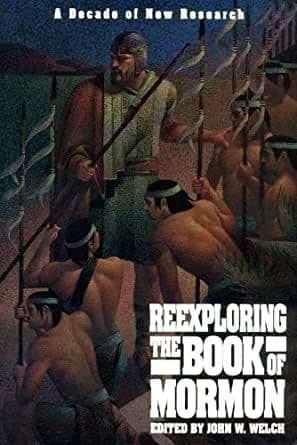Book
85 Chapters

Helaman 7:10 “which was by the highway which led to the chief market, which was in the city of Zarahemla”
Helaman 7:10 clearly states that Nephi had a “garden” and that it was near the highway that led to the “chief market” in the city of Zarahemla. Such ideas have seemed incompatible with what was known about ancient American life. Recent discoveries about Mesoamerican urban settlements, however, have now made these features seem highly reasonable.
The text says that Nephi “was upon a tower, which was in the garden of Nephi, which was by the highway which led to the chief market, which was in the city of Zarahemla.” The “tower” might easily refer to pyramidal mounds, some built and used by families and lineage leaders for religious ceremonies, and which were referred to by the Spanish conquerors as “towers.”1 Highways too are now well known in Mesoamerica during Book of Mormon times.2 But what evidence is there of gardens and chief markets in ancient Mesoamerican cities?
Gardens. For decades the prevailing view was that cities with high-density populations did not exist at all in Mesoamerica. In the last twenty years, however, intensive work at places like Teotihuacan and Monte Alban have demonstrated unquestionably that cities in the modern sense were indeed known during the Book of Mormon times.3
Indeed, in at least some of those cities, garden areas were cultivated immediately adjacent to single habitation complexes. At the archaeological site of El Tajín near the coast of the Gulf of Mexico east of Mexico City are the remains of a city that occupied at least five square kilometers at its maximum period, probably between A.D. 600-900. At that time, the houses of its middle-class people were surrounded by gardens and fruit trees.4 Likewise, the famous city of Tula, north of the capital of Mexico, was even larger, up to fourteen square kilometers around A.D. 1000-1100, and gardened houselots were common there too.5
Chief Markets. No one knowledgeable of pre-Columbian Mexico has had any doubt that markets were found in all sizeable settlements. Cortez and his fellows were amazed by the market in Tlatelolco in the Valley of Mexico, by its diversity of goods, and by the complexity of its organization. Yet until recently, only little attention has been given to the fact that a number of these cities had multiple markets.
The evidence, however, seems quite clear. Blanton and Kowalewski, for example, have noted that Monte Alban had both a chief market and subsidiary ones.6 For Teotihuacan, Rene Millon identifies one location as “the principal marketplace” and suggests that other markets existed for special products, such as kitchen wares.7 George Cowgill, the other leading expert on Teotihuacan, concurs. 8 The Krotsers point out the same phenomenon at El Tajín. 9 Meanwhile Edward Calnek’s reexamination of documentary evidence on the organization of the Aztec capital, Tenochititlan, has established that each major sector of the city had its own market, in addition to the giant central one. 10 Apparently Zarahemla was no different.
These things once seemed problematic in the book of Helaman’s casual description of Nephi’s neighborhood. They turn out instead to have substance beyond what was known only a few years ago.
Based on research by John L. Sorenson, April 1985.
1. Albert Idell, ed., The Bernal Diaz Chronicles (Garden City, New York: Doubleday, 1956), 151, 173-74.
2. John L. Sorenson, “Digging into the Book of Mormon: Our Changing Understanding of Ancient America and Its Scripture, Part 2,” Ensign 14 (October 1984): 18-19.
3. See Rene Millon, “Teotihuacan: City, State, and Civilization,” and Richard Blanton and Stephen A. Kowalewski, “Monte Alban and After in the Valley of Oaxaca,” in Handbook of Middle American Indians, Supplement (Austin: University of Texas Press, 1981), 1:208 and 94-116, respectively.
4. See Paula H. and G. R. Krotser, “The Life Style of El Tajín,” American Antiquity 38 (April 1973): 199, 204.
5. See Richard Diehl, “Tula,” in Robert C. West, ed., Natural Environment and Early Cultures, vol. 1 of Handbook of Middle American Indians (Austin: University of Texas Press, 1964), 1:277-95.
6. See Richard Blanton and Stephen Kowaleski, “Monte Alban and After in the Valley of Oaxaca,” 106.
7. Rene Millon, “Teotihuacan: City, State, and Civilization,” 225, 229.
8. See George Cowgill, “Rulership and the Ciudadela,” in Richard M. Leventhal and Alan L. Kolata, eds., Civilization in the Ancient Americas (Albuquerque: University of New Mexico Press, 1983), 342.
9. Paula H. and G. R. Krotser, “The Life Style of El Tajín,” 199-205.
10. See Edward Calnek’s “The Internal Structure of Cities in America: The Case of Tenochtitlan,” The International Congress of Americanists 40 (1972): 41-60.
Book
85 Chapters
Items in the BMC Archive are made publicly available for non-commercial, private use. Inclusion within the BMC Archive does not imply endorsement. Items do not represent the official views of The Church of Jesus Christ of Latter-day Saints or of Book of Mormon Central.